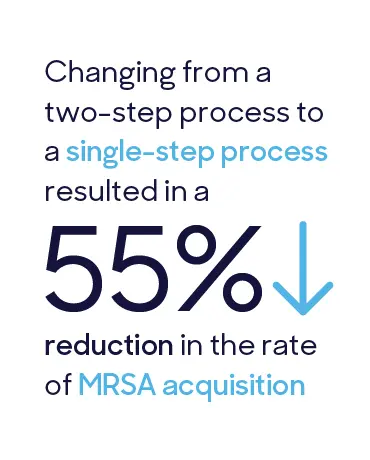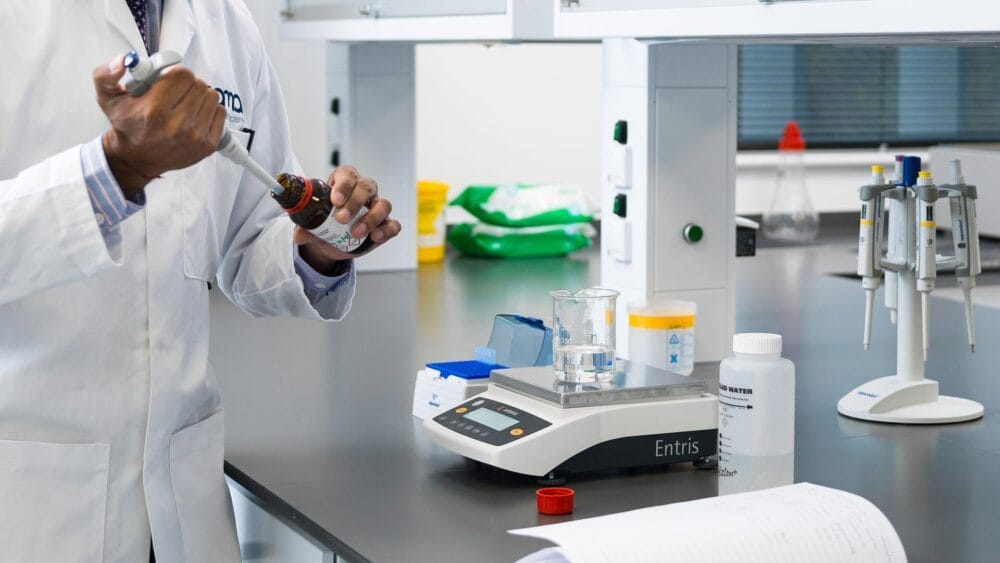Posted
7th August 2019
Research
There is a wide range of options when choosing the most appropriate disinfectant wipe. The University Hospitals Birmingham (UHB), that prompted this series, evidenced that switching from one disinfectant wipe strategy to a more effective one resulted in improved patient outcomes.
Several factors influence the choice of wipe: intended application, range of microbial efficacy, staff acceptability and cost.The key consideration when selecting a wipe for environmental hygiene in a healthcare setting is the intended application. A thorough analysis and understanding of what you want the wipe to deliver is the vital first step in choosing an appropriate wipe (see table below).
| Wipe categoryExampleApplicationsDetergent wipeClinell Detergent Wipes (yellow)Ideal as part of a two-stage cleaning/drying and disinfection processGeneral combined detergent/disinfectant wipeClinell Universal Wipes (green)Appropriate single-step detergent/disinfectant for most cleaning/disinfection tasks in healthcare settingsSporicidal wipesClinell Sporicidal Wipes (red)For high-level disinfection. Ideal for tackling C. difficile, unidentified gastrointestinal pathogens, and in high risk/outbreak situations, such as C. auris |
|---|
Whilst detergent wipes are usually the least expensive, they’re not optimal for most environmental hygiene tasks in healthcare settings – especially when pathogenic microorganisms are known or suspected (which is almost always!). This is because, when used incorrectly, detergent wipes are known to spread pathogenic micro-organisms between surfaces.For most cleaning/disinfection tasks in healthcare settings, a high-quality combined detergent/disinfectant wipe – such as Clinell Universal Wipes (green) – is the best choice. These wipes both clean and disinfect surfaces.In some circumstances, a higher level of disinfection is required. When dealing with spores (such as C. difficle), unidentified gastrointestinal pathogens, or during outbreaks, everyday disinfectants may not be appropriate. Here, a Clinell Sporicidal Wipe, offering the highest level of efficacy, is the best choice. Clinell Sporicidal Wipes (red) use peracetic acid to achieve powerful antimicrobial efficacy, whilst retaining strong cleaning performance and broad surface compatibility.Standard efficacy tests for disinfectant wipes are inconsistent; manufacturer claims should be interpreted with caution! This is especially true for sporicidal wipes. A wide range of ‘sporicidal’ wipes are coming onto the market. However, concerning published data shows that wipes marketed as being ‘sporicidal’ do not have meaningful activity against spores when tested under controlled laboratory conditions. When considering sporicidal wipes, you should ask: is it plausible that the chemicals in the wipe will have sporicidal activity? Does the laboratory data provided by the manufacturer support their claims? Were the tests performed in a reputable, accredited laboratory? If the answer to any of these questions is no, then your wipe probably isn’t sporicidal and you should look for an alternative.In the case of UHB, the hospital was using a two-step process for nursing led disinfectant tasks: an initial detergent wipe cleaning followed by an alcohol wipe disinfection step.The study evaluated the impact of changing this two-step method to a single-step detergent/disinfectant product (Clinell Universal Wipes). The study illustrated the importance and impact of choosing the right disinfectant wipe. This change in process resulted in a 55% reduction in the rate of MRSA acquisition.

When it comes to infection prevention, best practice is just as important as using the best product. GAMA is launching ‘Clean Between,’ to break the chain of infection, support infection prevention professionals and protect patients.
To help stop the spread of infection, we’re running ‘Clean Between’ events all over the country. Find out more here.
SHARE THIS ARTICLE
Tags
Latest News
Introducing HEXI HUB: A seamless transition in our product line
We’re pleased to announce an update to our product offering…
Innovative solutions for tackling Carbapenemase-producing Enterobacteriaceae (CPE) at King’s College Hospitals
King’s College Hospital NHS Foundation Trust, one of London’s largest…
Gloves Off: reducing unnecessary plastic waste during environmental cleaning and disinfection
In this blog, Dr Phil Norville discusses the momentum-gaining ‘Gloves…
Gloves Off: Navigating SDS sheets and skin safety claims in environmental decontamination products
In this blog, James Clarke (Head of R&D, Science &…




